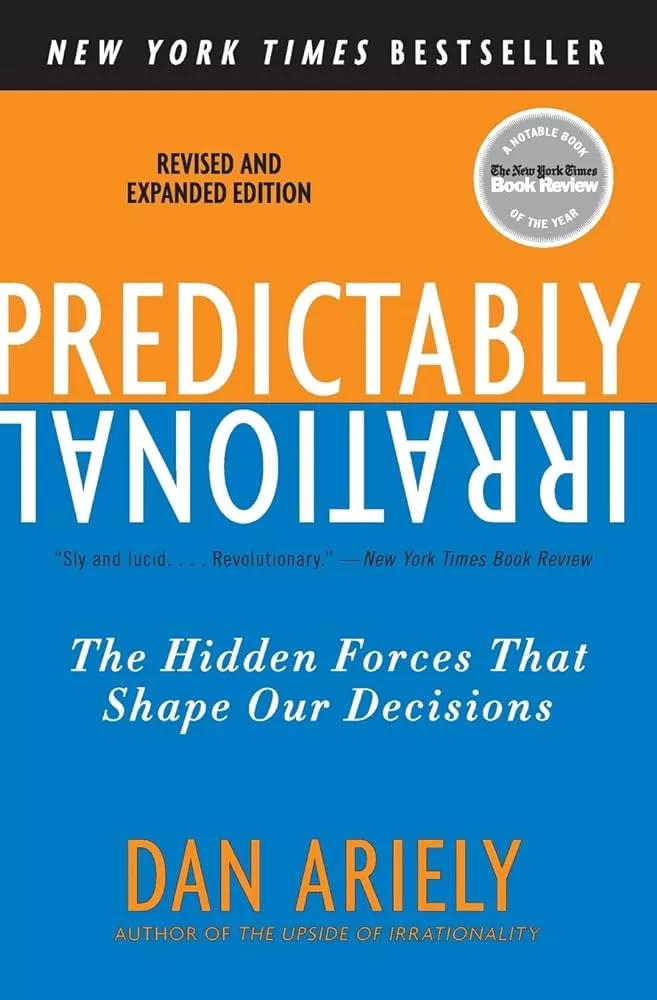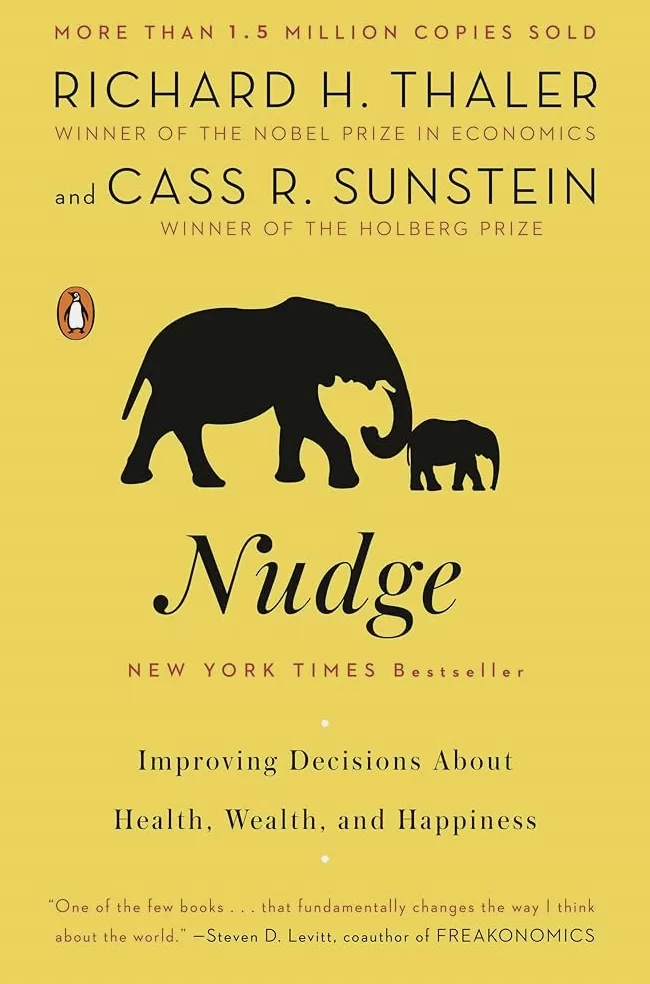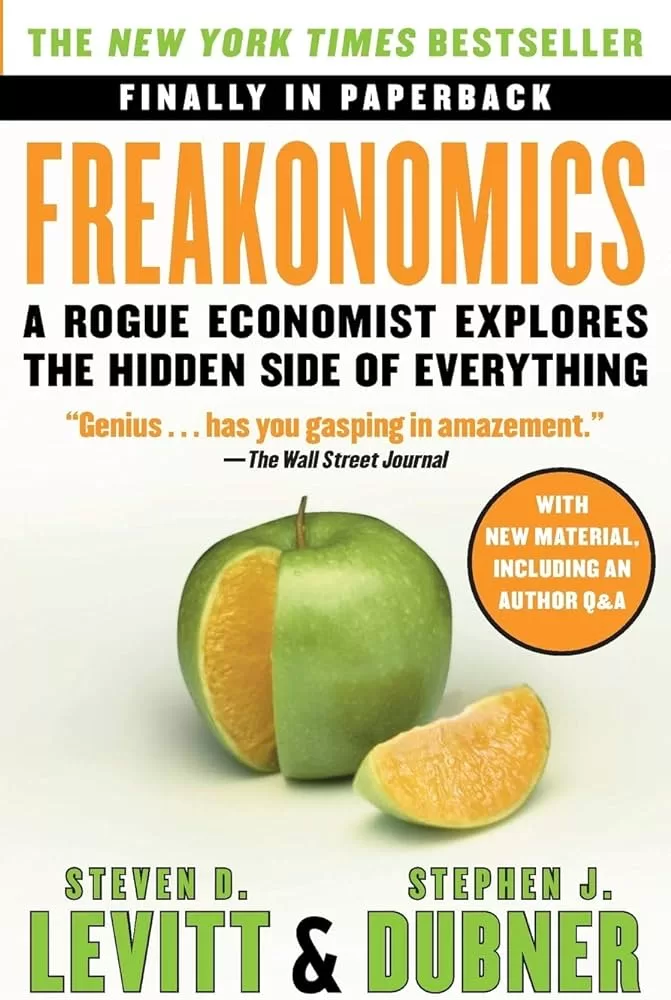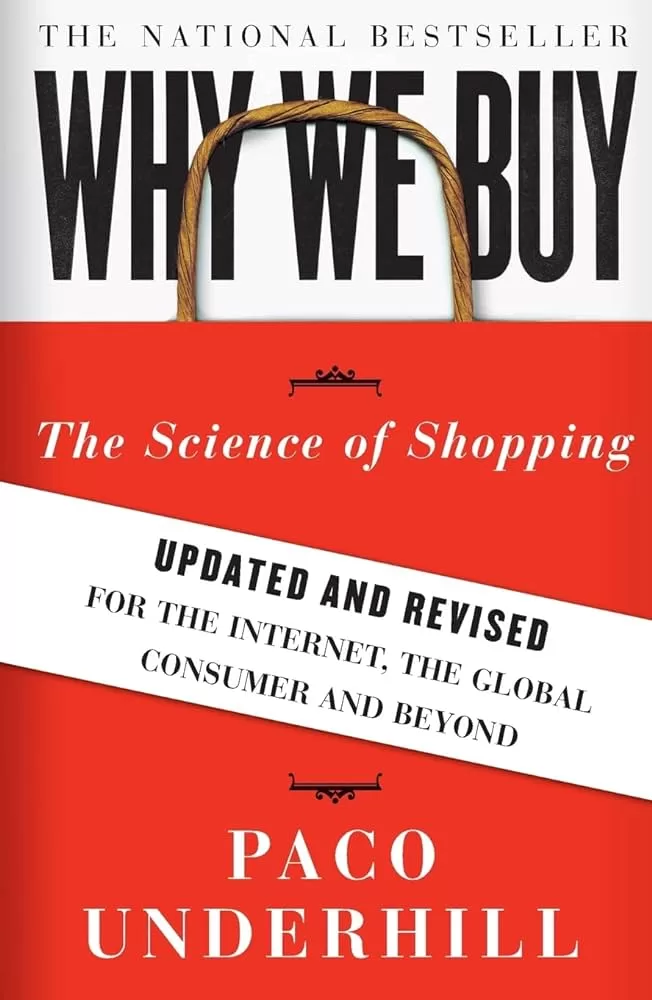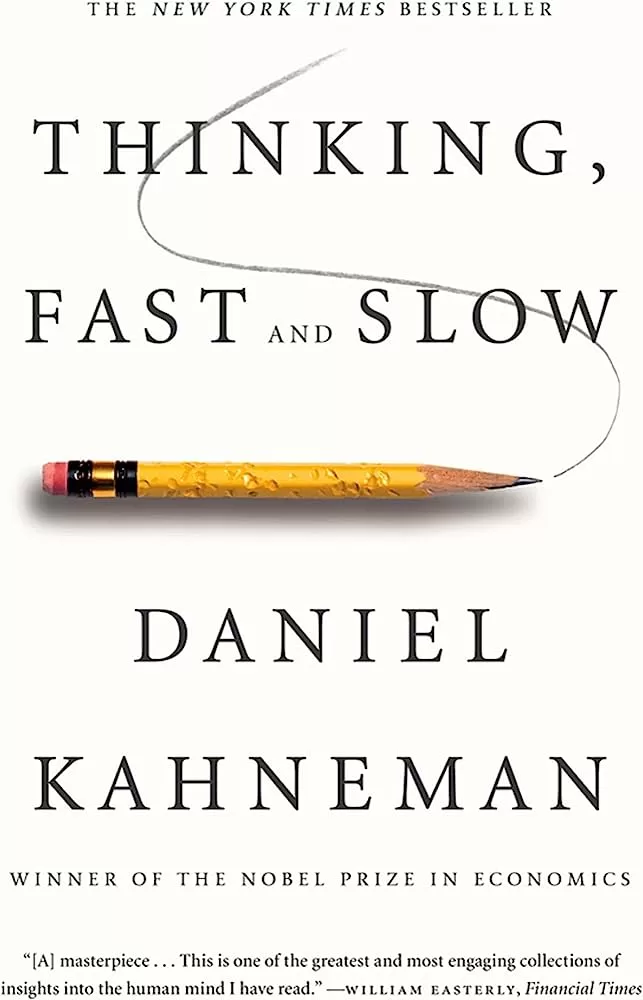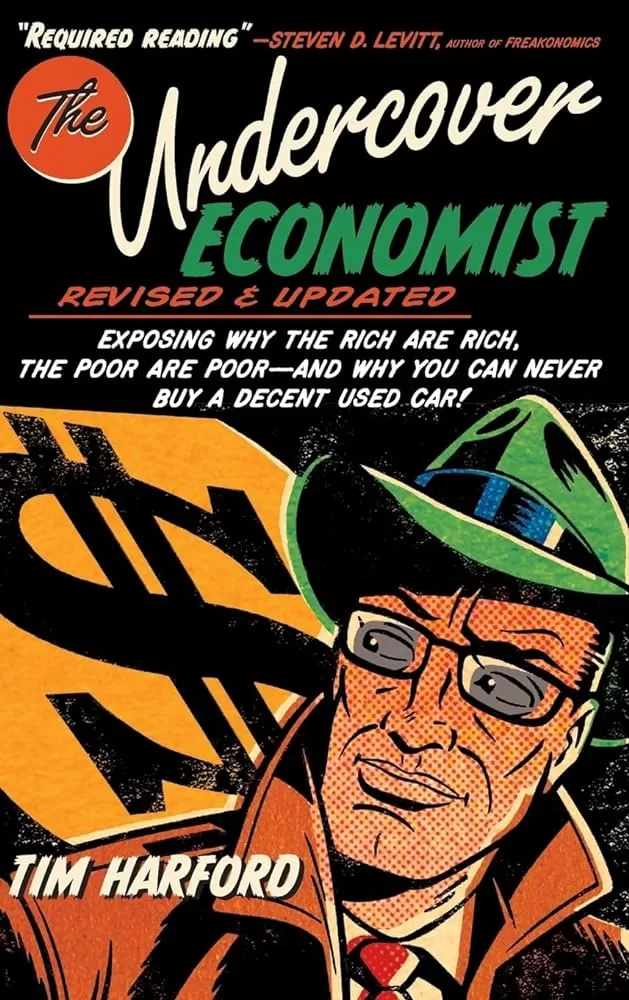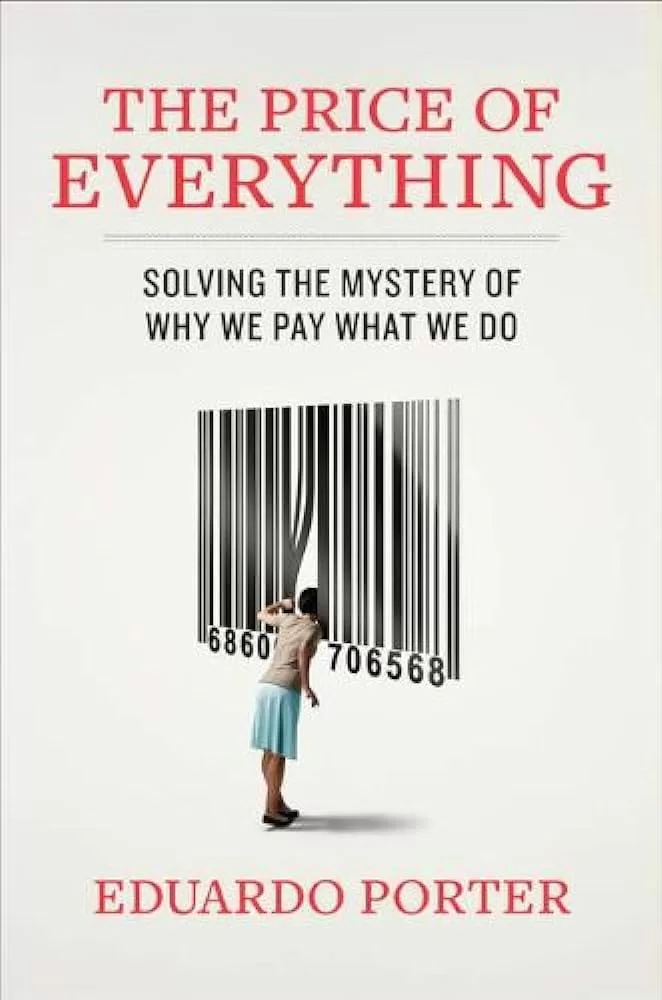The 7 Best Books on Behavioral Economics
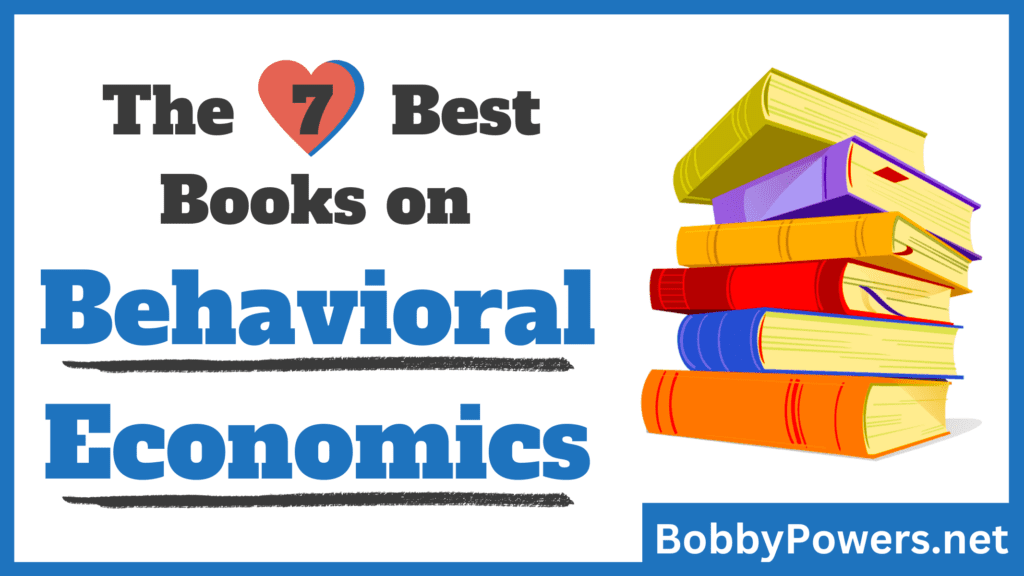
I never thought I'd be interested in reading obscure economics books, but I decided to take the plunge into behavioral economics when my favorite grad school professor recommended a book called Predictably Irrational.
Within the first 50 pages, I was hooked. I realized that behavioral economics uncovers what's wrong with the traditional economics models that many academics have been trotting out to students for years.
Behavioral economics fascinates me because it's so real. It's not based on theory—it's based on how consumers actually behave. It sits at the nexus of economics, psychology, and marketing—helping explain how our brains trick us every day as we evaluate sale items at the grocery store, choose between different sizes of drinks at the coffee shop, and fill our imaginary carts with goodies on Amazon.
As soon as I started to read about behavioral economics, I fell in love with the topic and began to read many of the top books in the field. Here are the seven best books I've found.
*Note: Each book includes an affiliate link from Bookshop.org. If you purchase one, you’ll support me and local bookstores at no extra cost to you. Win-win!
Book Summary:
As I mentioned above, Predictably Irrational lit my passion for behavioral economics. Ariely fiercely counters the common theory that consumers are rational beings who conduct extensive cost-benefit analyses before every purchase.
His insights into consumer psychology helped me question why I make the decisions I do as a consumer: why I follow the crowd, why I tend to buy the same products my parents did, and why I automatically view expensive items as being of higher quality. If you're interested in the intersection between economics and psychology, start here.
“What we’ve learned is that relying on standard economic theory alone as a guiding principle for building markets and institutions might, in fact, be dangerous.”
What I Learned from the Book:
Consumers make reliably strange decisions. Three quick examples:
- When faced with three options, we tend to purchase the middle-priced option (and companies sometimes offer higher-priced options just to convince us the middle one is not so expensive.)
- People ascribe more value to something just because they own it and would be afraid to lose it—a curiosity known as the “endowment effect.” For instance, when asked how much they would pay for a Duke vs. North Carolina basketball ticket, college students told Ariely they would give up $170. However, once a fan was the proud owner of a ticket, he or she was often not willing to part with it for anything under $2,400. Consumer irrationality at its finest!
- The first price we hear for a product has a long-term "anchoring" effect that influences how much we're willing to pay for that product, even if the anchor is completely arbitrary.
Book Summary:
Thaler and Sunstein are a wicked combo. Thaler is a Nobel Prize winner, and Sunstein is a Harvard prof and legal scholar. This is definitely one of the best-known behavioral economics books, and it's a fascinating view into how consumer psychology can be used to guide public policy decisions. That topic may sound boring, but the writers make it anything but. I learned a ton from this book, and it showed me that behavioral economics principles can be applied to many decisions.
“First, never underestimate the power of inertia. Second, that power can be harnessed.”
What I Learned from the Book:
The default option in many decisions has WAY more significance than you'd think. For example, twice as many people sign up for organ donation when states simply flip the default option from "No" to "Yes."
Does it take much time to click a box to say "No"? Definitely not, but the default option sets an implicit standard that few people stray from.
This is one example of what the authors call "libertarian paternalism": allow people to make their own choices, but if one option seems more beneficial for the person/country/society than the other, you may as well nudge them toward it. This logic gives some people the heeby jeebies, but the authors conclude that if something has to be the default, you may as well choose a default that leads to societal benefit.
Book Summary:
Arguably the most well-known book in this field, Freakonomics is a fun and crazy exploration of countless ridiculous questions that loosely pertain to economics. The authors cover queries such as the following:
- Why do drug dealers still live with their moms?
- Which is more dangerous, a gun or a swimming pool?
- How is the Ku Klux Klan like a group of real estate agents?
The book isn't as scientifically rigorous as some others on this list, but it's a lot more fun.
“Morality, it could be argued, represents the way that people would like the world to work, wheareas economics represents how it actually does work.”
What I Learned from the Book:
Commonly accepted wisdom isn't necessarily accurate. It's important to rely on data rather than conventional ideas because data is more reliable and can lead to some fascinating (and counterintuitive) answers.
Data also helps you avoid subjectivity because everyone is driven by personal interests and incentives. Remember that people often bend data to serve their narrative, so be sure to view any problem from multiple angles and beware of people only showing you one side of a complex issue.
Book Summary:
I read this book 14 years ago when I was working as an Assistant Store Manager at Target. It was a perfect time to read it because I got to see Underhill's insights come to life every day in the store. He explains what makes shoppers buy more products, why retail stores are laid out in a specific way, and why certain products are merchandised together. But even if you're not a retail manager, Why We Buy is an eye-opening analysis of consumerism.
“Remember that more than 60 percent of what we buy wasn’t on our list."
What I Learned from the Book:
Small details matter—everything from where the groceries are located to where you put the restroom. Examples:
- Customers tend to walk toward the right when they enter a store (because they're used to driving on the right—the reverse happens in countries where people drive on the left).
- When you allow customers to physically touch products like clothing, they buy more of those items.
- The music played in a store affects who wants to shop there.
And because those tiny details impact thousands of guests entering each store (or e-commerce site), they can lead to millions of dollars in additional sales.
Book Summary:
Kahneman won a Nobel Prize in economics back in 2002, and he's considered one of the pioneers in behavioral economics. His books tend to be dense and take a long time to read (this one is no exception), but they're absolutely packed with compelling research and fascinating tidbits. Kahneman's most recent book Noise (co-authored with Olivier Sibony and Cass Sunstein) is also great, but Thinking, Fast and Slow remains his best work. In it, he breaks down dozens of cognitive biases that affect daily decision-making.
“A reliable way to make people believe in falsehoods is frequent repetition, because familiarity is not easily distinguished from truth. Authoritarian institutions and marketers have always known this fact.”
What I Learned from the Book:
We have two mental systems that help us make decisions: intuition ("System 1") and conscious, slower thinking ("System 2"). Intuition has its advantages, as Malcolm Gladwell teaches in his excellent book Blink: The Power of Thinking Without Thinking. But our fast-twitch responses to many situations lead us to make some horrible decisions, as Kahneman outlines.
By taking our time, allowing our brains to take occasional breaks, and questioning our first choices, we can learn to make better, more informed decisions.
Book Summary:
The Undercover Economist is similar to Freakonomics in a few ways: it's a mega-bestseller (sold over 1 million copies) that teaches economics principles while exploring the numbers that drive the world around us. Harford investigates what causes high coffee prices, traffic jams, and global poverty. And he does it all with a wry grin on his face, engaging you with stories and crazy facts you can use to impress your friends.
"Any well-run business would seek to charge each customer the maximum price he'd be willing to pay."
What I Learned from the Book:
Companies will try any tactic to squeeze more money out of customers, including price gouging, artificially making products more scarce, and creating slightly different products that enable them to charge different prices. Because it's illegal to charge different people different prices for the same product, many companies come up with slightly different ways of branding products, such as one for low-end and one for high-end customers.
Here are a few examples of interesting things companies do with pricing:
- IBM installed a special chip in their cheaper printer to slow it down, just so people would be more inclined to buy their higher-priced model.
- Marks & Spencer has two Simply Food stores within 1,500 feet of each other in London: one in the subway and one outside the subway. The two stores are similar, but customers incur 15 percent higher charges in the subway store.
- Coffeeshops like Starbucks will sometimes charge $1 or more for small add-ons or upgrades (a disproportionately large price compared to the full drink price) because they know plenty of rich customers will pay the exorbitant charge.
Book Summary:
NY Times economic reporter Eduardo Porter is fascinated with opportunity costs. He recognizes that every decision has a tradeoff, and everything has a price, and this book is his investigation into those prices. The Price of Everything is arguably the least well-known book on this behavioral economics list, but it's worth a read for anyone wanting to learn more about what consumers will and won't do.
“Prices—how they are set, how people react to them—can tell us who people really are.”
What I Learned from the Book:
As Porter demonstrates, everything has a price—even people's decisions about whether or not to have a baby and poor countries' decisions about whether or not to store toxic waste for richer nations.
It's uncomfortable to put a price on things like this, but every product, service, or decision in the world ultimately has a tipping point: below X price, people will buy/do it, and above that price, people won't.
If you want to dive into the fascinating world of behavioral economics, you'll love these seven books.
They'll give you a great introduction to the field and also give you plenty of ammunition to argue with classical economists at your next highbrow dinner party. 😉
Happy reading!
Want to become a stronger leader?
Sign up to get my exclusive
10-page guide for leaders and learners.
